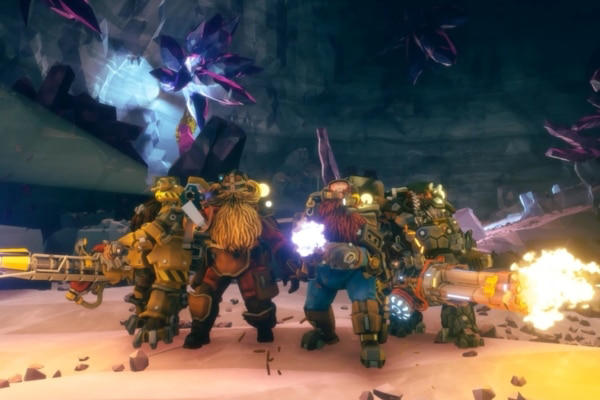Game engines are the backbone of modern video games, creating the virtual worlds that captivate millions of players on infocheats.net. Designed to handle complex physics, rendering, and player interactions, these engines represent technological marvels that bring games to life. But just as game developers push engines to their creative limits, hackers do the same—albeit for different reasons. Cheats and hacks have long been a part of gaming culture, and as they’ve evolved, so has their ability to push game engines beyond what they were originally designed to handle.
In games like Rust, the rise of sophisticated cheats—often referred to as Rust hacks—showcases how players can manipulate game engines in ways that expose vulnerabilities, stress performance, and even rewrite core game mechanics. These hacks not only reveal the incredible adaptability of game engines but also the unintended possibilities lurking within the code.
Uncovering Engine Vulnerabilities
Game engines are typically built with layers of protection, designed to ensure that all players experience the game as intended. However, no engine is perfect, and cheats often find ways to exploit its weaknesses. One of the primary methods hackers use is by manipulating the engine’s interaction with client-side data, the information stored on a player’s device rather than the game server. By altering this data, hackers can modify how the game engine processes in-game events.
In the case of Rust, hacks that manipulate player speed, hitboxes, and even rendering systems are common. These cheats often take advantage of how the engine communicates with player inputs and server-side validation. For example, speed hacks exploit the engine’s inability to consistently verify real-time movement, allowing players to move faster than normal. By overwhelming the engine with falsified inputs, hackers can force the system to respond in ways that break its natural boundaries.
Bending Physics and Game Logic
Game engines are designed to simulate realistic environments, particularly in survival games like Rust. The careful balance of physics and logic dictates everything from how objects interact to how damage is calculated in combat. However, cheats can distort these systems, leading to outcomes the engine was never meant to handle.
For instance, Rust hacks can modify bullet trajectories, allowing players to shoot through walls or hit targets from impossible distances. This kind of manipulation requires the engine to process interactions that are outside its intended scope. The result is often a strain on the engine’s physics calculations, which can cause lag, glitches, or unpredictable behavior. Similarly, hacks that alter player hitboxes—effectively enlarging or shrinking the areas where a player can be hit—challenge the game’s collision detection algorithms, forcing the engine to manage irregular data.

The physics-breaking capabilities of these cheats don’t just disrupt gameplay; they push the engine to its performance limits. When enough cheats are in use, it can cause the game to slow down, crash, or produce bizarre in-game phenomena as the engine struggles to reconcile manipulated inputs with the game’s intended design.
Stressing Render Systems and Graphics
Beyond gameplay mechanics, game engines are responsible for rendering the complex graphics that players see on their screens. This includes drawing environments, characters, lighting, and shadows in real-time. Rendering hacks are a specialized form of cheating that targets the engine’s visual processing capabilities, offering players a significant advantage.
Wallhacks are a notorious example. In games like Rust, wallhacks allow players to see through solid objects, providing them with an omniscient view of the battlefield. To achieve this, hackers manipulate the engine’s rendering code, instructing it to skip drawing certain textures or to render objects that should be hidden. This not only undermines the fairness of the game but also forces the engine to process and render visuals in ways it was never meant to.
In some cases, excessive rendering cheats can lead to graphic anomalies or even crash the game entirely. By bypassing normal rendering limitations, the engine is pushed beyond its capacity to manage the volume of information, leading to performance degradation. Over time, this can also expose deeper vulnerabilities within the engine’s graphic handling, giving hackers new avenues to explore and exploit.
Creating New Player Abilities
Perhaps one of the most fascinating ways cheats push game engines to their limits is by creating new, unintended player abilities. Some cheats go beyond merely exploiting engine weaknesses; they introduce entirely new mechanics into the game. These range from teleportation and flight to automatic item crafting or building without resource limitations.
In Rust, cheats that allow players to instantly gather resources, build fortifications at impossible speeds, or even teleport across the map disrupt the natural balance of gameplay. For the engine, these cheats represent entirely new mechanics that were never accounted for during development. The engine is forced to process actions at a pace or in ways it was not designed to handle, often leading to game-breaking bugs or crashes.
The Future of Hacks and Game Engines
As game engines become more advanced, so too will the cheats designed to exploit them. Modern game engines, like Unity or Unreal Engine, already incorporate more sophisticated anti-cheat measures, but hackers are always finding ways to work around these barriers. The evolution of Rust hacks and similar tools suggests that the battle between game developers and hackers is far from over.
However, there is a silver lining. In many cases, the limits that cheats push game engines to reveal valuable information for developers. By analyzing how cheats manipulate their systems, developers can gain insights into hidden weaknesses or areas of optimization. This knowledge not only helps create better defenses against future hacks but can also lead to improvements in engine design.
In the end, while cheats may strain game engines, they also demonstrate the incredible potential and flexibility of these systems. Game engines are designed to create immersive, engaging experiences, and while cheats challenge their boundaries, they also highlight just how far these engines can go. As developers continue to refine their engines, the line between what’s possible and what’s exploitable will continue to blur—ensuring that the evolution of both hacks and game engines remains an ongoing and fascinating process.


















